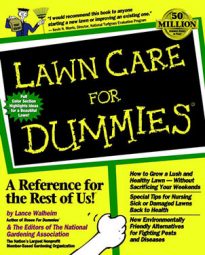Here’s a shocker — how often you need to mow your lawn depends on how quickly it grows and each type of grass has an ideal height. Of course, how quickly your lawn grows depends on a number of conditions:
How much you fertilize: The more nitrogen fertilizer you apply, the faster the lawn grows, and the more you have to mow.
The time of year: Cool-season grasses grow fastest in the cool months of fall and spring. Warm-season grasses grow faster during the hot months of summer. During those periods, you have to mow more often.
How you water: Obviously, if you stop watering, or at least cut way back, the grass grows less and you don’t need to cut as often. More water usually means more mowing.
Okay, so several factors influence how quickly grass grows, and that growth, in turn, affects how often you mow. But how do you know when to mow? Here’s the rule: Mow your lawn when the grass reaches about one third higher than the recommended mowing height. For example, if you usually cut your lawn to 2 inches high, you need to mow your lawn when the grass is about 3 inches high. Easy, right?
If you let your lawn grow too high and then mow it, it’s no big deal, right? Wrong. First, the grass can get sunburned — kind of like taking your shirt off at the beach for the first time in the summer. When grass gets real tall, the lower parts are shaded. When you cut the grass, the shaded part of the blade isn’t used to the sun and burns. That’s bad.
Cutting really long grass also shocks the roots. The height of the grass relates directly to the depth of the roots. Well, if you whack off a large portion of the top, you’re cutting off the food, and you hurt the roots. That’s bad.
Last of all, mowing tall grass makes a mess. You have to clean up all those clippings because if you don’t, the extra-long clippings can smother the grass, and that’s really bad. Besides, those clumps of grass look terrible.
Check the chart here to determine the ideal height for the grass in your lawn:
| Grass type | Height |
|---|---|
| Bahia grass | 2 to 3 inches |
| Bent grass | 1/4 to 1 inch |
| Bermuda grass, common | 3/4 to 1-1/2 inches |
| Bermuda grass, hybrid | 1/2 to 1 inch |
| Blue grama | 2 to 3 inches |
| Buffalo grass | 2 to 3 inches |
| Centipede grass | 1 to 2 inches |
| Fescue, fine | 1-1/2 to 2-1/2 inches |
| Fescue, tall | 2 to 3 inches |
| Kentucky bluegrass | 1-3/4 to 2-1/2 inches (You can mow some newer, dwarf varieties lower.) |
| Ryegrass, annual | 1-1/2 to 2 inches |
| Ryegrass, perennial | 1-1/2 to 2 inches |
| St. Augustine grass | 1-1/2 to 2-1/2 inches |
| Zoysia grass | 1 to 2 inches (You can mow some newer, dwarf varieties lower.) |

